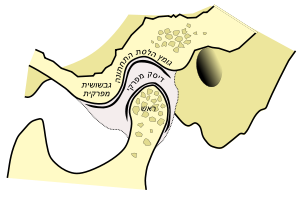Many people who don’t actually suffer from temporomandibular joint syndrome (TMJ) only have a cursory understanding of this affliction of the jaw. Unfortunately, according to Dr. Stanley Markman, an estimated 75% the U.S. population is all too familiar with TMJ. And while many people experience only intermittent symptoms, approximately five percent of TMJ sufferers require professional treatment for severe pain.
But what many people don’t understand is that, although TMJ is a pain localized in the jaw, it can be brought on by different medical problems.
Causes
The jaw joint itself is made up of many muscles, nerves, blood vessels and bones. This joint also experiences much wear and tear over time, as it is in constant motion due to activities like chewing and speaking. Therefore such factors as aging, trauma, or bad habits such as teeth grinding can all lead to TMJ.
Some other factors that can lead to TMJ include:
- Clenching. Those who constantly clench their jaw due to nervousness or stress can lead to tension in the jaw, which is a symptom of TMJ.
- Osteoarthritis. Arthritis affects the joints in the human body, and the jawbone certainly isn’t immune. Arthritic changes can occur from a breakdown of the joint due to normal aging.
- Dental work. Yes, even a responsible trip to the dentist can cause pain in the jaw characteristic of TMJ. Those who experience these painful symptoms often find that heat application and massage directly after the dentist visit to be helpful.
Symptoms
There are a multitude of symptoms that can signify TMJ. Those people who experience one or more of these particular symptoms should consult their doctor to determine whether or not they are suffering from TMJ:
- Pain in the jaw and facial muscles. Oftentimes this pain radiates to the shoulders and/or neck. People who experience this symptom often experience pain while talking. This pain is usually localized in the joint, but it may spread to the skull and cause headaches and dizziness.
- Ear pain/discomfort. TMJ often causes tinnitus (ringing in the ears), hear loss and ear pain. This type of TMJ pain is often confused for general ear pain.
- Joint sounds. This is a common indicator of TMJ and is characterized by a clicking or popping sound in the haw region.
- Facial swelling in the jaw area.
- Locking of the jaw. This is another common indicator in which the jaw often locks wide open. Conversely, the jaw may also lock in the closed position.
- Difficulty swallowing. This is characteristic of TMJ and is usually caused by the muscle spasms.
Treatment
After a doctor performs a physical exam and diagnoses the problem treatment can then commence. Some treatment options include:
- Home treatment. This is ideal for those patients suffering only mild pain and discomfort caused by TMJ. Anti-inflammatory medications such as aspirin and ibuprofen are often effective at easing pain. Application of warm compresses on the painful area is effective as well. A doctor might also recommend a diet of soft foods.
- Medical treatment. A doctor may recommend a splint or jaw plate that the patient can wear at home in order to correct the problem. A more invasive procedure to curb TMJ involves inserting needles into the joint in order to clean it out. This operation is performed under anesthesia. Occasionally doctors may perform a simple procedure that involves injecting cortisone into the joint.
- Surgery. One extreme option to treat chronic TMJ is to replace the jaw joints with implants. The National Institute of Dental and Craniofacial Research recommends surgery only as a last resort to dealing with TMJ pain.
These are just a few things to keep in mind when diagnosing TMJ and considering treatment options. The good news is that, for the majority of people who experience this affliction, symptoms resolve on their own after a couple of weeks.
Jessie Flesner is a freelance writer in New Albany, Indiana. She often writes about the dental industry for www.pdentalinc.com.


Leave a Reply